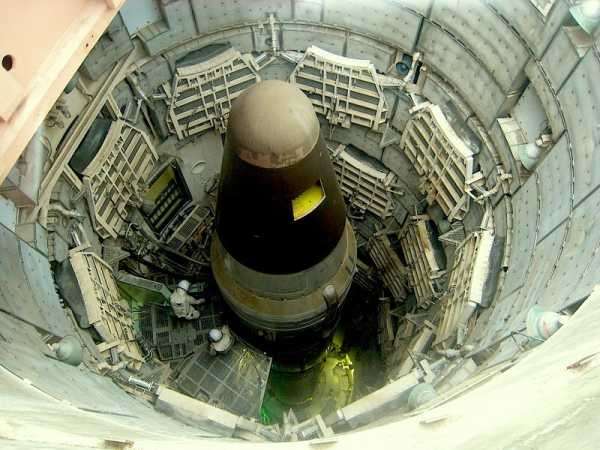
A US Titan class nuclear missile, from the Cold War, now decommissioned and held at a museum in Nevada (Photo: jonkeegan)
Vladimir Putin’s threat of extreme violence in the face of possible Nato provocation has rightly raised the issue of the use of nuclear weapons, and it has come as a shock worldwide.
It causes particular concern for anyone in Europe under the age of 40 with little memory of Cold War Europe and even less knowledge of the nuclear strategies of those times.
There is still a common view that nuclear weapons are all about maintaining a degree of stability through a balance of terror: that the weapons ensure stability through mutually-assured destruction (appropriately “MAD”). Many would argue that their existence over the past nearly 80 years has actually preserved peace.
What has come as a shock is the possibility that Putin might use nuclear weapons if the Kremlin is unable to achieve its aim of regime change in Kyiv by other means, and specifically if Nato support for Ukraine is at the root of this failure.
There may be a hope that Putin was talking tough out of frustration at the unexpectedly slow progress his forces were making in the first three days of the war. But no-one feels sure.
The problem is that any examination of the actual nuclear postures of those Cold War years is not particularly reassuring. Yet it’s still necessary to factor this into the current crisis in seeking a resolution of the conflict.
At root of much of the problem is that mistaken idea that during the Cold War, mutually assured destruction was the foundation of the nuclear posture on both sides.
It was not. Nato maintained the option of nuclear first use from the early days, and while the Soviet Union claimed to have a “no first use” policy, no-one believed it in practice.
The 1960s ‘tripwire’ policy
Until the late-1960s, Nato’s nuclear policy was codified in a document MC14/2, known as the “tripwire” policy, envisaging a massive nuclear response to any Soviet initiation of war, and developed when Nato had a massive nuclear superiority.
By the early 1960s the United States had developed numerous tactical nuclear weapons and was leaning towards the use of such weapons in nuclear exchanges which might fall short of all-out nuclear war.
By the late-1960s, the tripwire policy was becoming untenable as the USSR began to match Nato’s nuclear forces with its own. Nato therefore developed a “flexible response”, codified in document MC14/3 of 16 January 1968.
This was the “Overall Strategic Concept for the Defence of the Nato Area” and it covered general conventional and nuclear policy, with the details of the latter developed by the Nuclear Activities Branch of the Supreme Headquarters, Allied Powers in Europe (SHAPE), at Mons, in Belgium.
It envisaged two levels of nuclear employment, “selective use” and “general response.”
The former involved the use of a limited number of nuclear warheads against advancing Soviet troops and their logistic support, in the belief that they could be halted without escalation to all-out nuclear war. Numbers of warheads used might range from a handful up to around a hundred, depending on circumstances.
If the policy failed and the conflict escalated, Nato would move to a general response, which amounted to all-out nuclear war. That would in all probability involve launching US and Soviet strategic nuclear weapons, and an all-out exchange with a globally catastrophic outcome.
Flexible response has gone through many phases, but it essentially survived the end of the Cold War.
There may have been some spectacular and very welcome cuts in strategic nuclear arsenals, down from a combined East-West total of over 60,000 to barely a tenth of that number of deployed weapons.
But weapons have continued to be based in Europe, both by Nato and Russia, and with a near-universal presumption that “first use” thinking, in extreme circumstances, is still in there.
What now?
Some 30 years later and we are in a war that Putin and the Kremlin were expected to win easily.
That has already failed, and the Kremlin is moving to a counter-city strategy to force the Ukraine government to capitulate.
That would give Putin an enlarged Greater Russia controlling Ukraine as well as Belorussia — both no doubt with Russian nuclear missiles pointing west.
If Nato intervenes in this, Putin could threaten a tactical nuclear attack to ensure success, putting Nato in a serious dilemma.
There are many other outcomes. The sanctions process is hurting. Beijing is already less friendly. Internal opposition is growing. Even Putin may no longer be in full control.
The bottom line, though, is that Nato could be in a position to experience nuclear deterrence in an entirely unexpected form, requiring skilled diplomacy and even a willingness for some compromise, however bitter, to avoid disaster.
Source: euobserver.com



